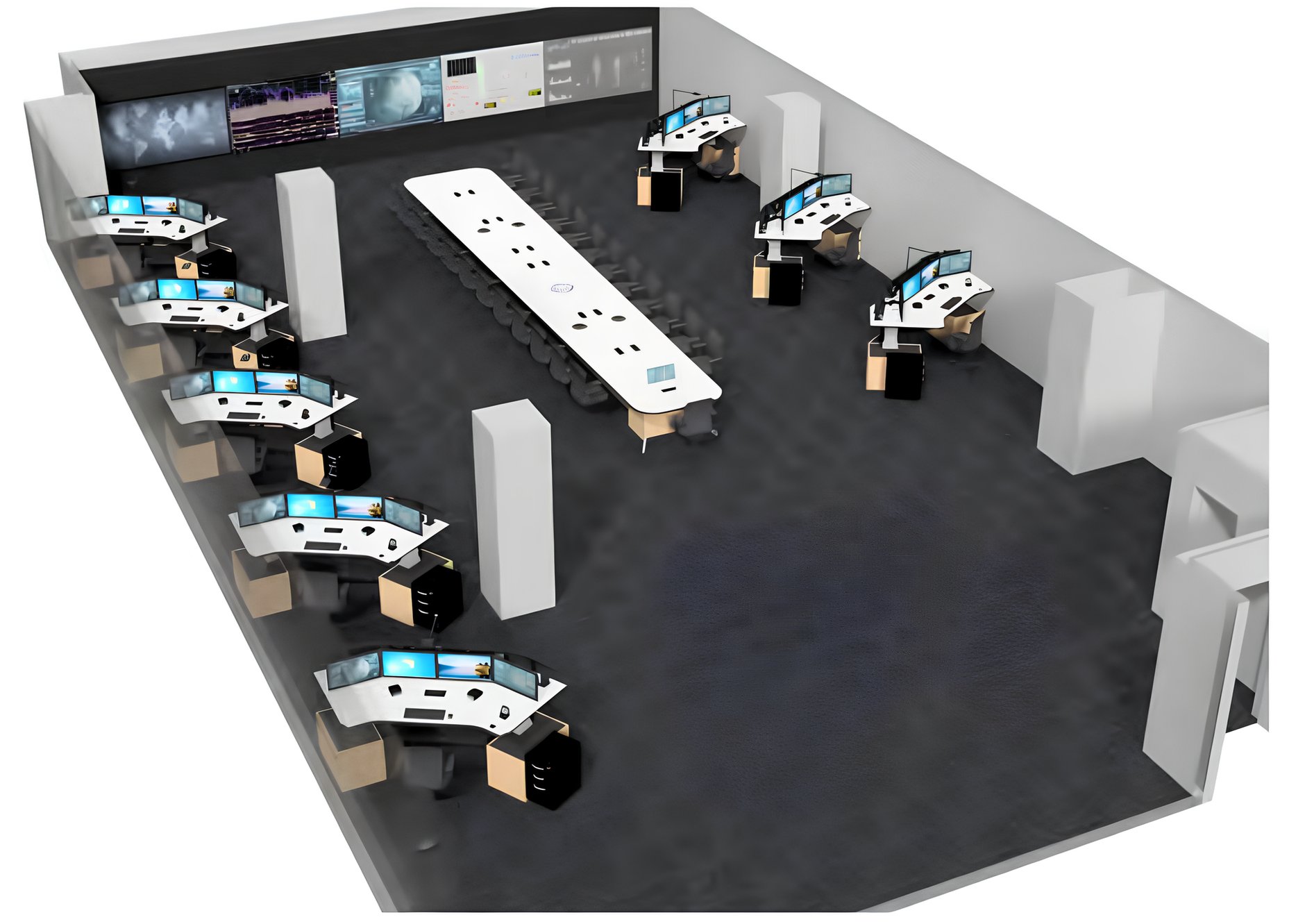Do sore necks, tired eyes, and sluggish decision-making plague your control room? With over 40 years of experience, Evans has seen it all. We understand the impact that control room ergonomics can have on your operators' well-being and productivity.
We believe control rooms shouldn’t just be functional, but they should be ergonomically optimized to empower people and prevent injuries. By prioritizing control room ergonomics the design becomes both worker-friendly and highly functional.
This starts with understanding how people interact with existing space. Evans team become observers, deciphering the unspoken language of movement within a control room. By analyzing traffic flow, operator interaction, and sightlines, we can design a space that revolves around human nature and fosters optimal workflow.
This translates to control room ergonomics that minimize repetitive tasks, awkward postures, and static forces. We cover everything from design principles and room layout to ensuring the health and safety of operators or dispatchers.
Evans design team also follows these guidelines for control room ergonomics:
- International Organization for Standardization (ISO 11064);
- Ergonomics of Human-System Interaction (ISO 9241-400);
- Underwriters Laboratory (UL);
- American National Standards Institute/Board of Standards Review (ANSI/BSR);
- ANSI/HFES 100-2007 (Human Factors Engineering of Computer Workstations);
- Canadian Standards Association (CSA); and
- Americans with Disabilities Act (ADA).

Control Room Ergonomics: Guide to Assessing Your Control Room
- Fatigue Assessment
Control rooms, with their split shifts, long hours, and constant monitoring, contribute to fatigue. This can significantly reduce operators’ alertness and impair decision-making. Here at Evans, we conducted more than 5,000 control room ergonomic assessments and turned even the most difficult control rooms into spaces where operators feel comfortable and productive. By strategically adjusting lighting brightness and color temperature, we can alleviate sleepiness and improve focus throughout the day. Similarly, maintaining optimal room temperature and air quality can significantly impact alertness and cognitive function. - Threat & Vulnerability Assessment
Traditionally, control room threat and vulnerability assessments focus on physical breaches, data breaches, and cyber-attacks. While these are crucial, at Evans we take a holistic approach.
First, we create an inventory of all IT assets within the control room. This includes servers, workstations, laptops, network devices, and other critical infrastructure. Next, we identify potential threats and vulnerabilities associated with each asset. These could include physical threats (e.g., unauthorized access), cyber threats (e.g., malware), and environmental risks (e.g., power outages).
We also establish clear access control policies. Only authorized personnel should have access to critical systems. Then, we implement strong authentication mechanisms. Multi-factor authentication (MFA) ensures that only authorized users can log in.
It’s important to remember to conduct regular TVAs to identify new threats and vulnerabilities. This includes penetration testing, vulnerability scanning, and security audits. - Visibility/Communication Assessment
Complex control rooms are often overloaded with information, leading to stressed operators. We help dispatchers and operators by giving them a clear organization of information and by making it easier to use visual displays.
The assessment measures background noise levels and evaluates potential sources of distraction. Noise reduction strategies like sound-absorbing materials or designated quiet areas are recommended to ensure clear communication channels. Evans also works to optimize the layout for effective communication between operators during shift handovers or when multiple personnel need to work collaboratively. - Site assessment
An analysis of the site comprises all the factors listed above and goes beyond physical dimensions. A detailed understanding of the planned operations is necessary. This allows for task analysis, identifying potential repetitive motions or awkward postures that need ergonomic solutions. By proactively considering these ergonomic factors in the design phase, Evans can create a control room that focuses on workspace proximity. - Technology Assessment
Control room ergonomics goes beyond simply acquiring high-tech equipment—it comes down to aligning technology with operator needs. Technology assessment helps Evans establish or identify potential control room needs. Technology gives us the tools, but ergonomics ensures operators can use them effectively and comfortably.
In control room design, video walls have long been considered a hallmark of best practices. However, blindly following this trend can lead to unnecessary expenses and missed opportunities. While video walls offer impressive visual impact, their price tags can strain budgets. Consider whether the benefits justify the investment, especially when more affordable alternatives exist.
Why do we believe we have the experience and skills to asses your Control Room?
We have been a Certified Ergonomics Education Provider for the American Institute of Architects (AIA) since 2016.

To wrap up:
Control room ergonomic design is not only about lighting or console positions – this is a holistic approach. It considers various interconnected factors, such as:
- Human Factors: Understanding the needs, comfort, and well-being of operators. This includes ergonomic furniture, proper seating, and minimizing physical strain.
- Workflow Optimization: Streamlining processes, task allocation, and efficient information flow. A holistic design ensures that operators can perform their duties effectively.
- Environmental Considerations: Addressing lighting, acoustics, temperature, and humidity. These factors impact operator performance and overall system reliability.
- Security and Safety: Implementing robust security measures and ensuring safety protocols are part of the holistic approach.
Want to build an ergonomic control room but not sure where to start?

